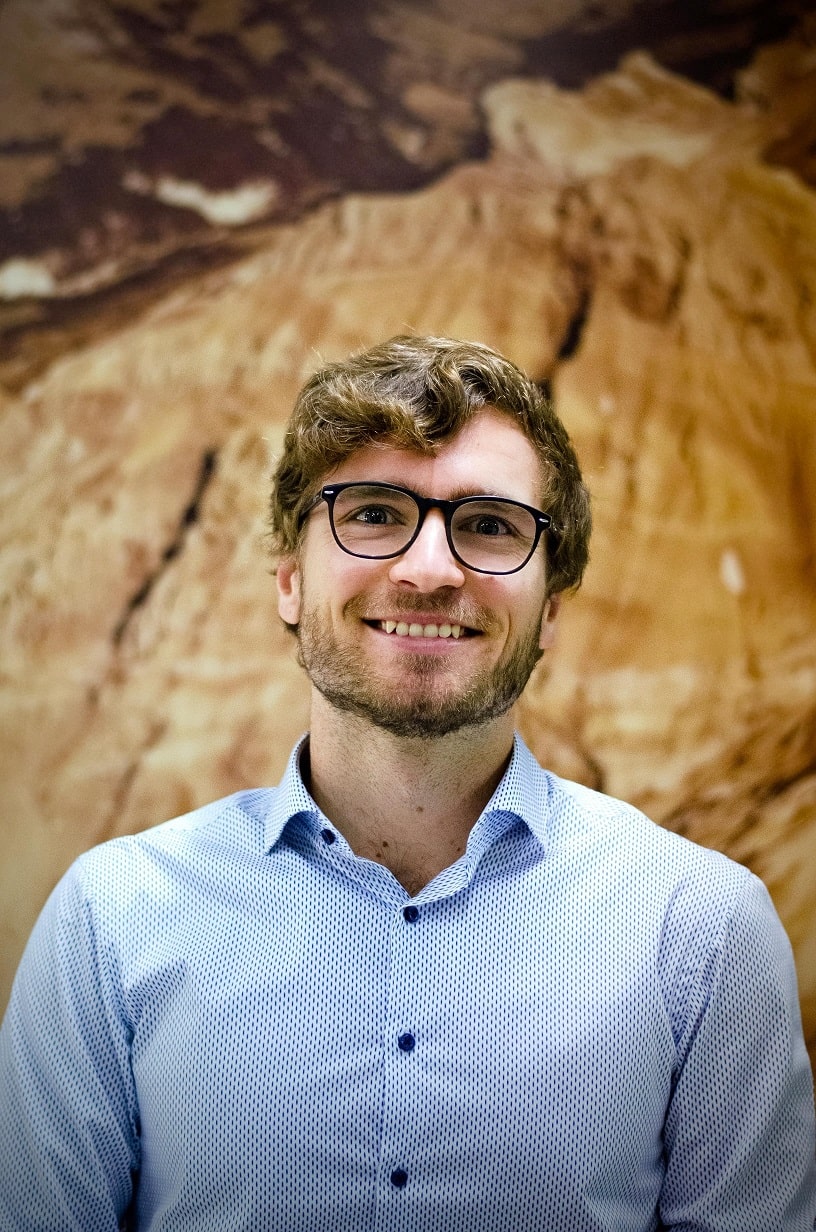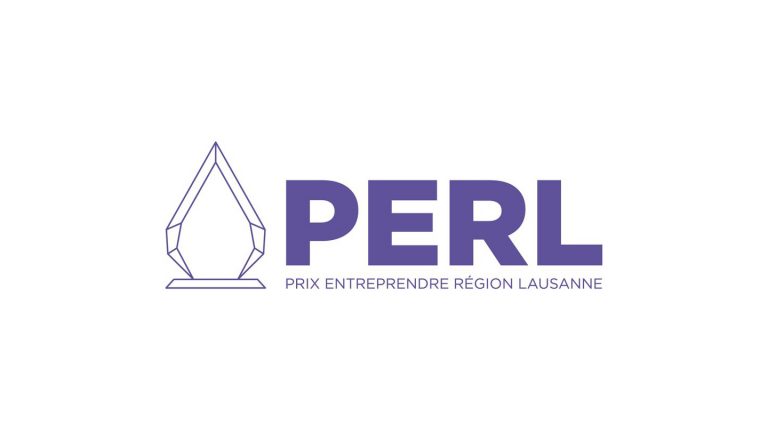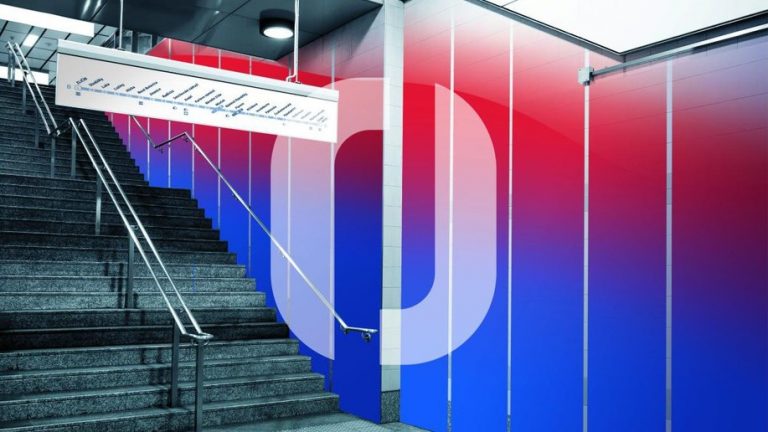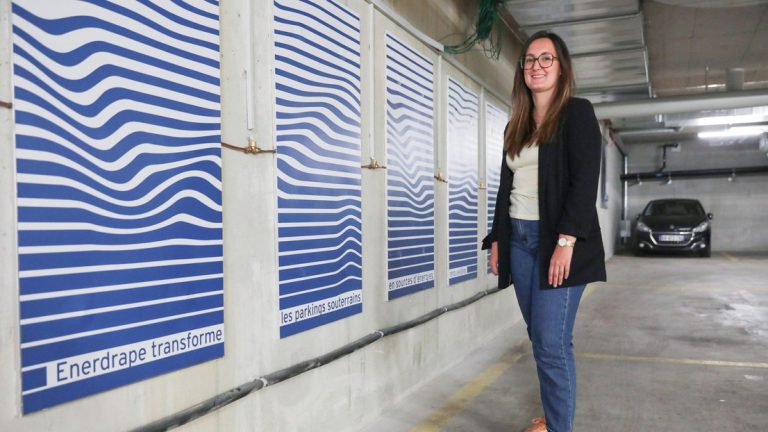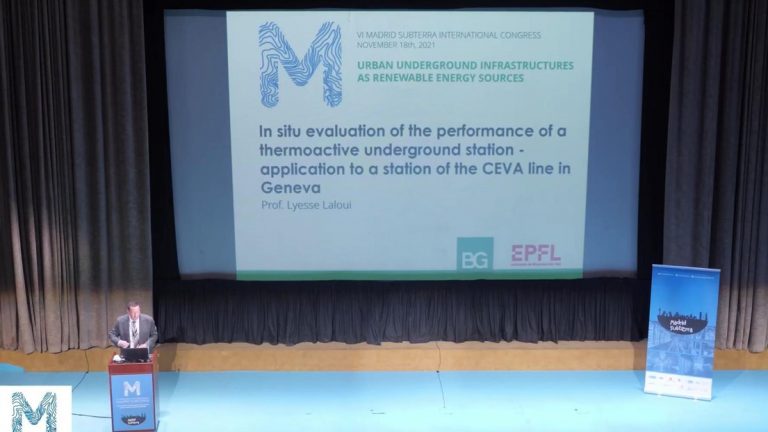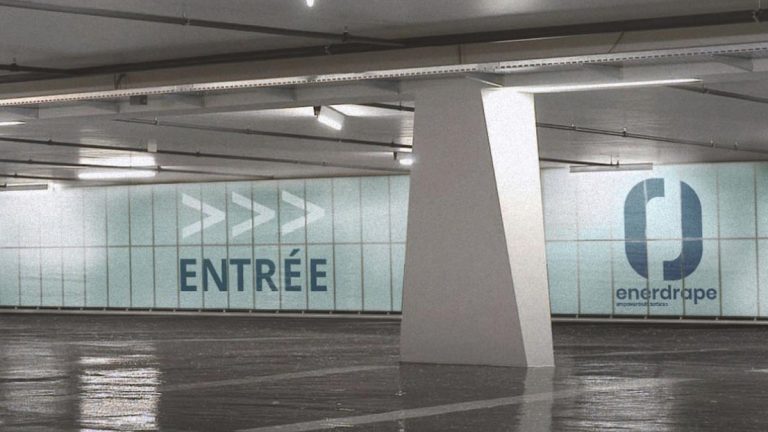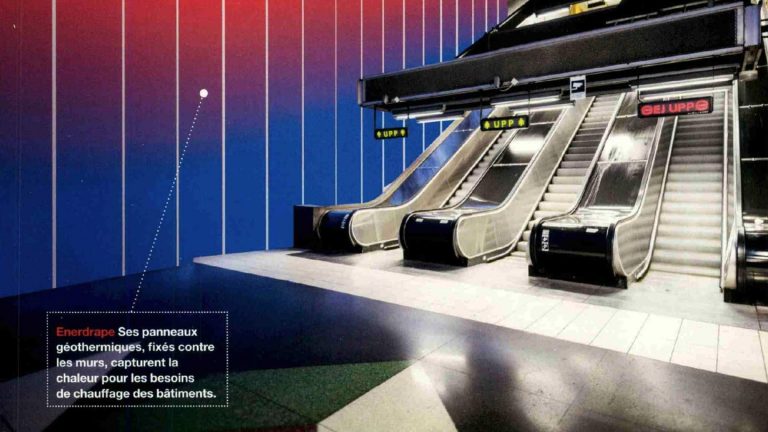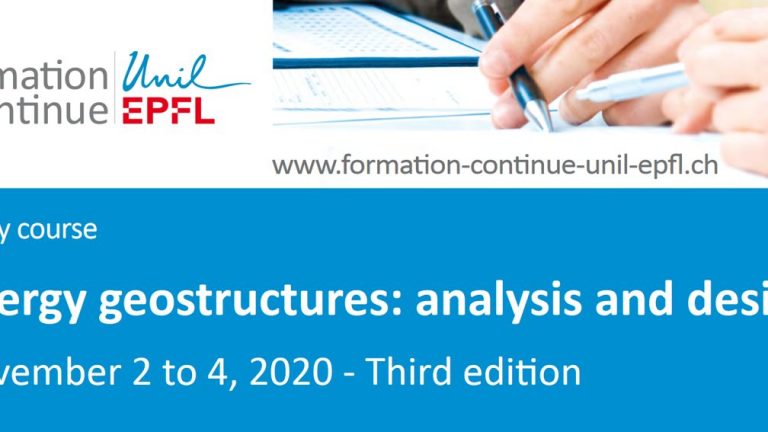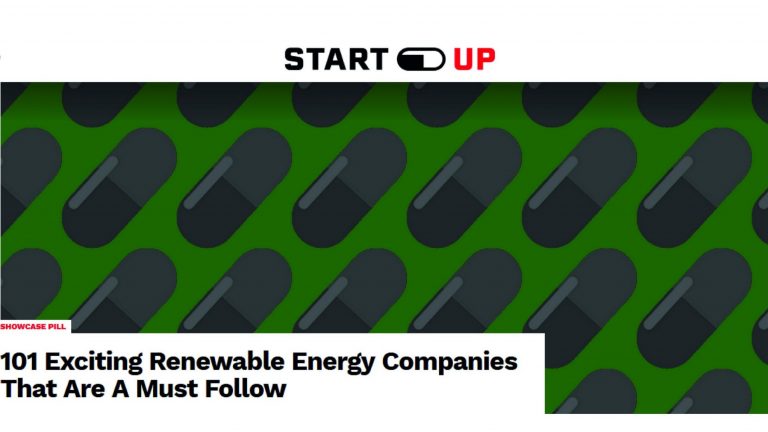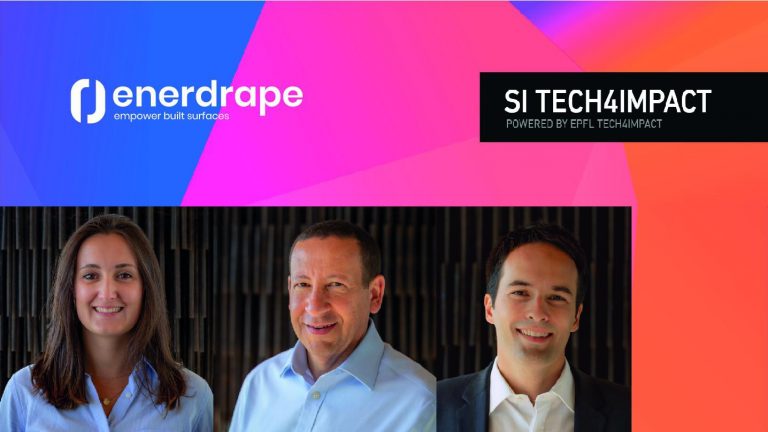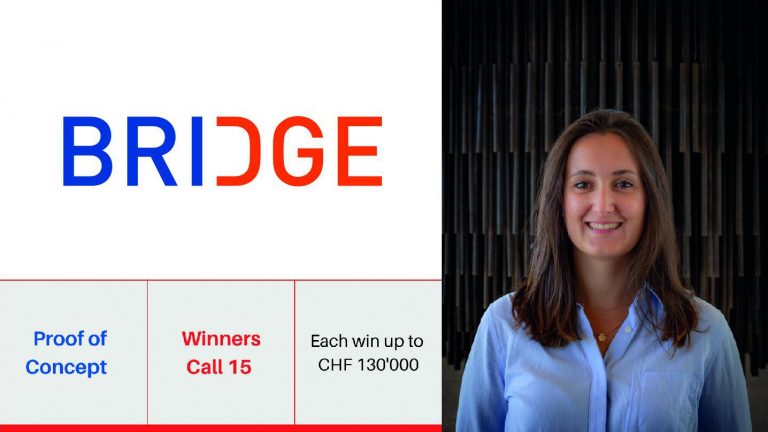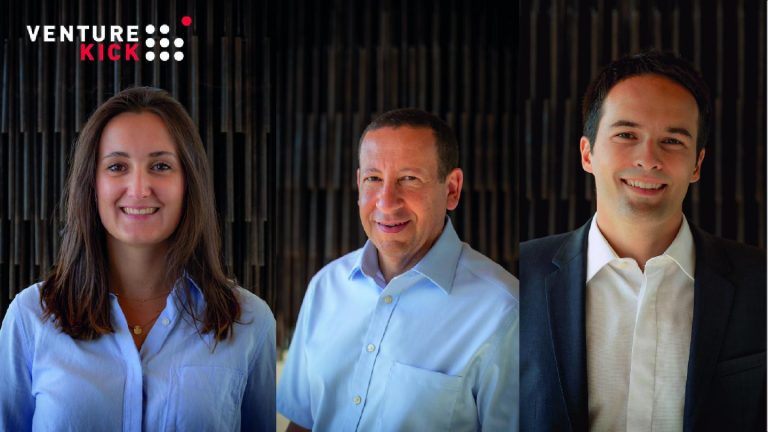Energy Geostructures

Harnessing the Power of the Ground: Energy Geostructures for Sustainability
To meet global carbon neutrality goals, we need innovative solutions like energy geostructures. These structures transform everyday building elements – foundations, walls, tunnels – into renewable heating and cooling systems. Imagine a building’s foundation also serving as its geothermal energy source!
The Challenge and Our Solutions
Designing energy geostructures is complex. They must provide structural support while handling unique thermal and mechanical stresses from the ground. Our research at the LMS tackles these challenges head-on. Here’s what we do:
Understanding the Science: What happens inside the ground when these structures provide both support and energy?
Engineering Solutions: How do we optimize energy geostructures for energy efficiency, structural soundness, and long-term performance?
Practical Applications: We help engineers and designers implement energy geostructures with confidence, spreading this sustainable technology.
Why This Matters
Energy geostructures offer a powerful way to reduce the carbon footprint of buildings and infrastructure, a key piece of a greener future.
Research Group for Energy Geostructures:
Professors
Post-doctoral researchers
Ph.D. Candidates
Research Projects:
Multiphysical modelling of sustainable geotechnics with a focus on biocementation and energy geostructures – Sofie ten Bosch
In the fields of geotechnical and geo-environmental engineering, there’s a trend emerging where researchers are increasingly using multiphysical methods targeting to develop integrated approaches leading to smarter construction methods and more efficient use of energy, especially in sustainable engineering projects.
The present thesis puts the focus on two distinctive applications which have been identified as promising innovations to tackle the question “How can we make geotechnical systems more resilient and sustainable?”. These innovations are the use of biocementation and energy geostructures. Multiphysical modelling contributes to the development of the understanding of underlying mechanisms involved in these problems and remains an essential tool for their design.
Numerical modelling of biocementation within this thesis focuses on projects representative of real geohazard mitigation problems, including foundation strengthening or slope stabilization using biocementation. This is essential for the step towards design principles for this technology, which is crucial for innovation adoption. On the side of energy geostructure applications, the challenge remaining to be addressed is to extend the domain of application beyond its conventional considerations and demonstrate their effectiveness in alternative scenarios, in for example underground data centres or metro stations. In doing so, this work aims to support future sustainable geotechnics applications and accelerate their innovation adoption.
Supervisors: Lyesse Laloui, Dimitrios Terzis, Elena Ravera
To former projects and publications
Publications
Assessing and exploiting the interaction between ventilation and geothermal systems in an underground data centre
Tunnelling and Underground Space Technology. 2024. Vol. 144, p. 105563. DOI : 10.1016/j.tust.2023.105563.Performance of energy piles foundation in hot-dominated climate: A case study in Dubai
Renewable Energy. 2024. Vol. 220, p. 119632. DOI : 10.1016/j.renene.2023.119632.Books:
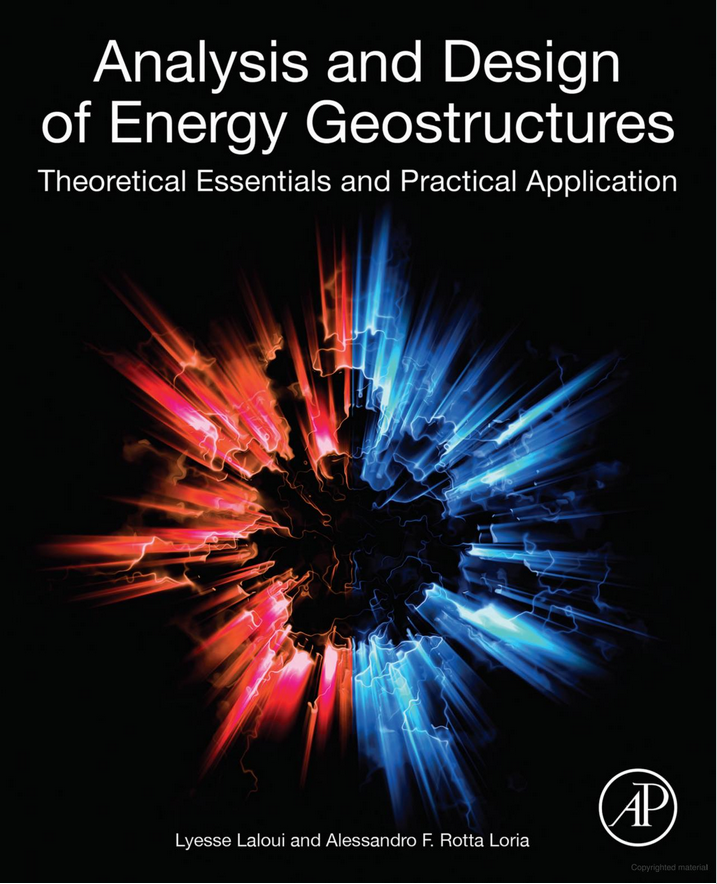
Analysis and Design of Energy Geostructures,1st Edition: Theoretical Essentials and Practical Application
Analysis and Design of Energy Geostructures gathers in a unified framework the theoretical and experimental competence available on energy geostructures: innovative multifunctional earth-contact structures that can provide renewable energy supply and structural support to any built environment. The book covers the broad, interdisciplinary and integrated knowledge required to address the analysis and design of energy geostructures from energy, geotechnical and structural perspectives.
Academic Press
1st November 2019
Hardcover ISBN: 9780128206232
2024
2023
2022
Ravera, E., & Laloui, L. Soils and Foundations, 62(3), 101152.
Rotta Loria, A. F., Richard, N., & Laloui, L. Geomechanics for Energy and the Environment, 100333.
Cassina, L., Laloui, L., & Rotta Loria, A. F. Renewable Energy.
Zannin, J., Ferrari, A., Kazerani, T., Koliji, A., & Laloui, L. Geomechanics for Energy and the Environment, 29, 100275.
2021
Houhou, R., Sutman, M., Sadek, S., & Laloui, L., Engineering Geology, 287, 105928.
Garbellini, C., & Laloui, L., Géotechnique, 71(3), 260-271.
Laloui, L., & Sutman, M., Geomechanics for Energy and the Environment, 27, 100214.
Zannin, J., Ferrari, A., Pousse, M., & Laloui, L., Underground Space, 6(2), 173-184.
Zannin, J., Ferrari, A., Kazerani, T., Koliji, A., & Laloui, L., Geomechanics for Energy and the Environment, 29, 100275.
Adinolfi, M., Loria, A. F. R., Laloui, L., & Aversa, S., Geomechanics for Energy and the Environment, 25, 100208.
2020
Ravera, E., Sutman, M., & Laloui, L., Canadian Geotechnical Journal.
Zannin, J., Ferrari, A., Larrey-Lassalle, P., & Laloui, L., Geomechanics for Energy and the Environment, 100218.
Zannin, J., Loria, A. F. R., Llabjani, Q., & Laloui, L., Computers and Geotechnics 128, 103618.
A.F.R. Loria, J.V.C. Oltra, L. Laloui, Computers and Geotechnics 120, 103410.
- Hydrothermal interactions in energy walls
J. Zannin, A. Ferrari, M. Pousse, L. Laloui, Underground Space.
A.F.R. Loria, M. Bocco, C. Garbellini, A. Muttoni, L. Laloui, Geomechanics for Energy and the Environment 21, 100153, DOI: 10.1016/j.gete.2019.100153.
M. Sutman, G. Speranza, A. Ferrari, P. Larrey-Lassalle, L. Laloui, Renewable Energy 146, 1177-1191, DOI: 10.1016/j.renene.2019.07.035.
C. Garbellini, L. Laloui, Journal of Geotechnical and Geoenvironmental Engineering, DOI: 10.1061/9780784482780.005.
Elena Ravera, Melis Sutman, Lyesse Laloui, Journal of Geotechnical and Geoenvironmental Engineering, doi.org/10.1061/(ASCE)GT.1943-5606.0002258
2019
C. Garbellini, L. Laloui,Géotechnique, 1-12, DOI: 10.1680/jgeot.19.p.208.
Elena Ravera, Melis Sutman, Lyesse Laloui, Computers and Geotechnics, doi.org/10.1016/j.compgeo.2019.103294
Benoît Cousin, Alessandro F.Rotta Loria, Andrew Bourget, Fabrice Rognon, Lyesse Laloui, Tunnelling and Underground Space Technology DOI: 10.1016/j.tust.2019.102997, 2019
Peltier, M., Rotta Loria, A.F., Lepage, L., Garin, E. and Laloui, L. Applied Thermal Engineering, 2019
Garbellini, C. and Laloui, L. Computers and Geotechnics, 2019
2018
Sutman, M., Olgun, G. and Laloui, L, Journal of Geotechnical and Geoenvironmental Engineering, DOI: 10.1061/(ASCE)GT.1943-5606.0001992, 2018
Rotta Loria, A.F., Laloui, L, Géotechnique, DOI: 10.1680/jgeot.17.P.213, 2018
Rotta Loria, A.F., Vadrot, A. and Laloui, L,Geomechanics for Energy and the Environment, DOI: 10.1016/j.gete.2018.04.001, 2018
2017
Rotta Loria, A.F., Vadrot, A. and Laloui, L, Computers and Geotechnics. DOI: 10.1016/j.compgeo.2016.12.015, 2017
Rotta Loria, A.F., and Laloui, L, Géotechnique, DOI: 10.1680/jgeot.16.P.139, 2017
Rotta Loria, A.F., and Laloui, L, Géotechnique, DOI: 10.1680/jgeot.16.P.039, 2017 https://doi.org/10.1016/j.tust.2019.102997
2016
Rotta Loria, A.F., and Laloui, L, Computers and Geotechnics, 2016
Di Donna, A., Rotta Loria, A.F., and Laloui, L., Computers and Geotechnics, 2016
2015
Di Donna, A., Ferrari, A., and Laloui, L., Canadian Geotechnical Journal, 2015
Rotta Loria, A. F., Orellana, F., Minardi, A., Fürbringer, J. M., and Laloui, L., Computers and Geotechnics, 2015
Media:
2022-2021
2022-2021
2020 – 2019
2018
Published in Madrid Subterra on 07 Novemeber 2018.
Published in TRACES 21 / 2018: Géothermie on 07 November 2018.
Published in the ‘’24 heures’’ on 10 January 2018.
2015
Published in “Terre&Nature” on 21 May 2015.
2014
Published in the ”24 heures” on 29 March 2014.
2013
Published in Deep Foundations on March/April 2013
2012
Published in La Regione Ticino on 02 February 2012.
2011
Published in Le Moniteur du BTP on 16 December 2011.
Published in the Ee-news on 1 July 2011.
Published in the EPFL news on 25 May 2011.
Tech – Transfer
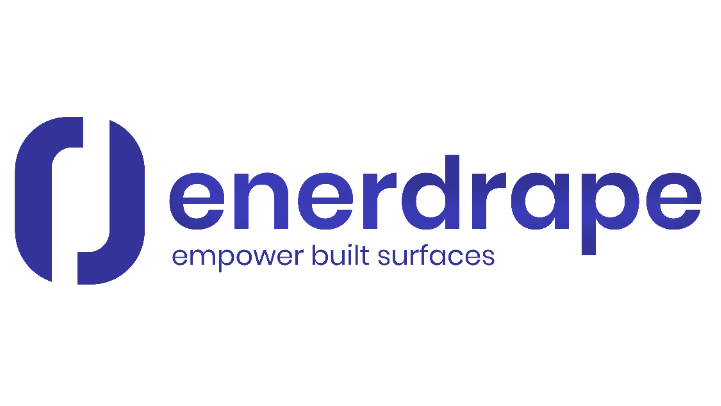
ENERDRAPE
We developed the first geo-thermal panel that efficiently captures both geothermal and waster heat in existing indoor environments located in the underground and transfers it for renewable heating and cooling to buildings. Unlike conventional geothermal systems, the technology developed relies on a non-invasive installation, allowing the use of shallow geothermal energy in existing buildings. The modular geo-thermal panels are meant to be installed in existing underground indoor environments such as underground parking, underground transportation hubs, tunnels etc. With the modular geo-thermal panels we facilitate access to renewable shallow geothermal energy to existing buildings while reducing capital investments, operation costs and CO2 emissions.

